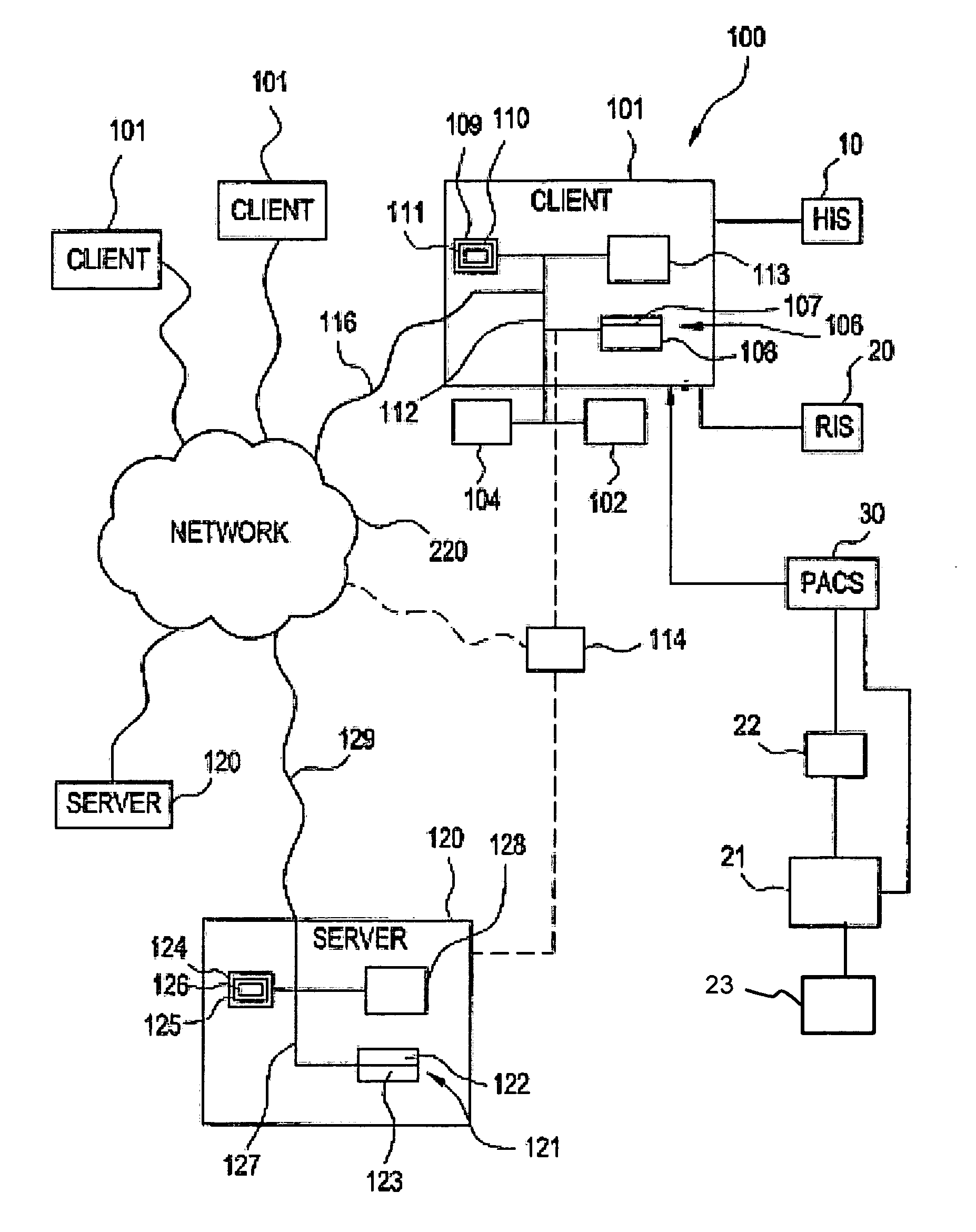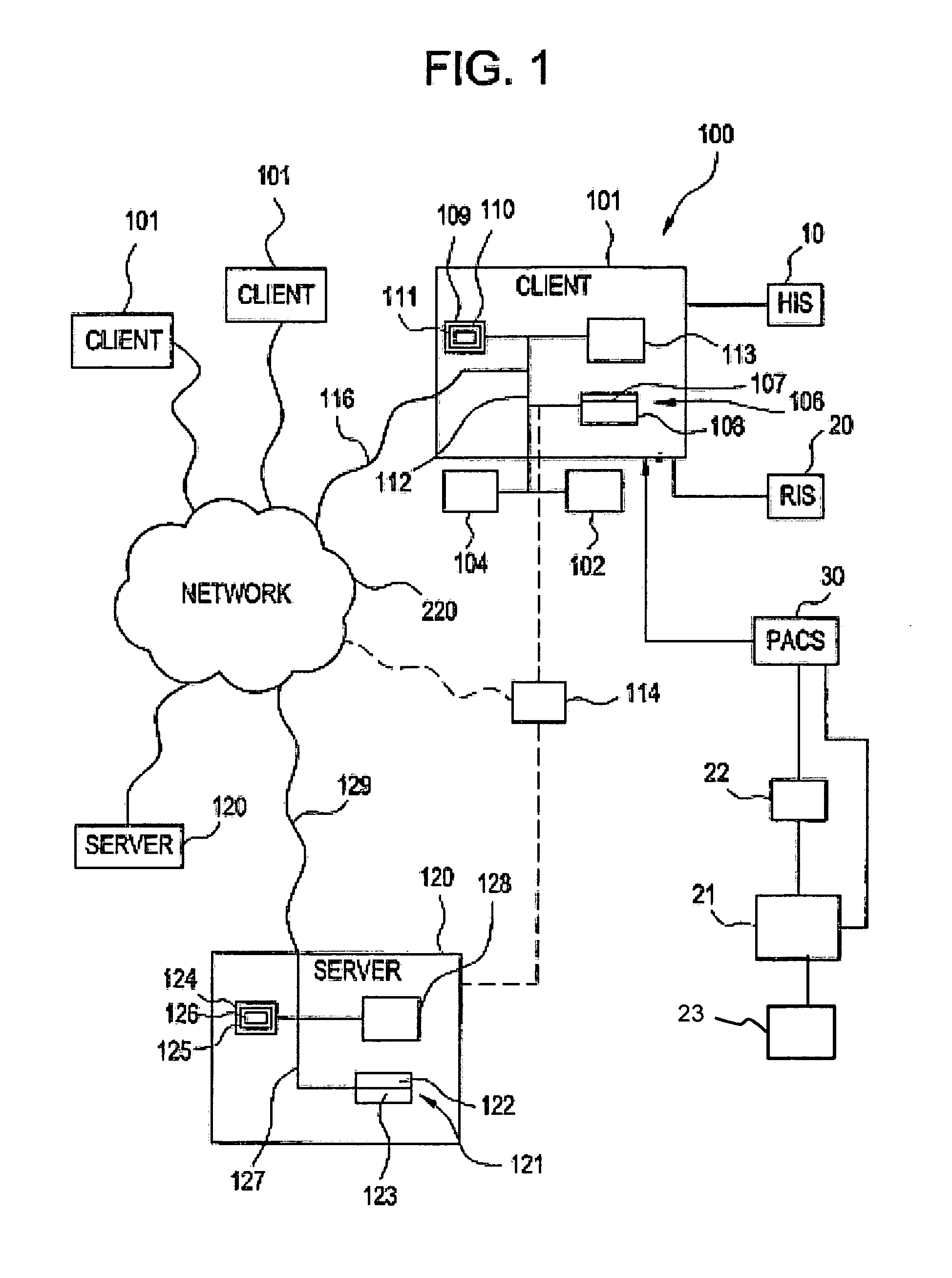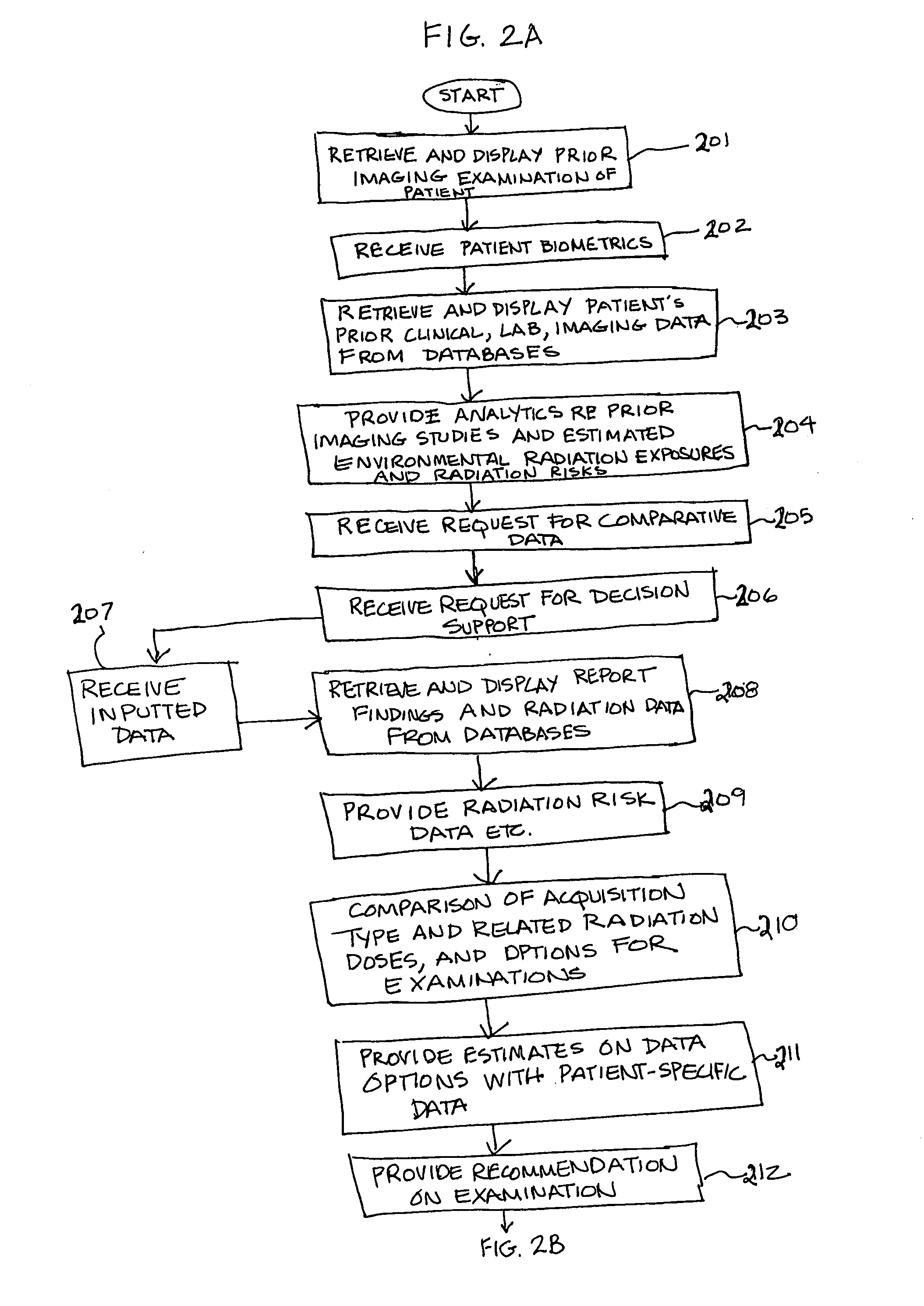Method and apparatus of determining a radiation dose quality index in medical imaging
- Summary
- Abstract
- Description
- Claims
- Application Information
AI Technical Summary
Benefits of technology
Problems solved by technology
Method used
Image
Examples
example
[0142]In one representative example, a patient presents for the first time to a new primary care physician with the complaint of chronic cough. The various stakeholders included in the analysis will include the patient, primary care physician (i.e., clinician), technologists, radiologist, hospital administrator, radiation oncologist, and technology provider (i.e., vendor).
[0143]At the time of clinical presentation, the patient (Mrs. Jones) reports a chronic, unrelenting cough for the past 3 months, along with an unexplained 10 pound weight loss. In taking the history, the clinician (Dr. Smith) identifies several additional variables which may be of clinical significance, including a 50 pack / year smoking history, prior diagnosis of COPD, surgical history of partial lung resection (for a benign neoplasm), and discontinuation of COPD and heart medications due to financial reasons. One of those medications Mrs. Jones has been taking for several years is used for the treatment of cardiac...
PUM
 Login to View More
Login to View More Abstract
Description
Claims
Application Information
 Login to View More
Login to View More - R&D
- Intellectual Property
- Life Sciences
- Materials
- Tech Scout
- Unparalleled Data Quality
- Higher Quality Content
- 60% Fewer Hallucinations
Browse by: Latest US Patents, China's latest patents, Technical Efficacy Thesaurus, Application Domain, Technology Topic, Popular Technical Reports.
© 2025 PatSnap. All rights reserved.Legal|Privacy policy|Modern Slavery Act Transparency Statement|Sitemap|About US| Contact US: help@patsnap.com



